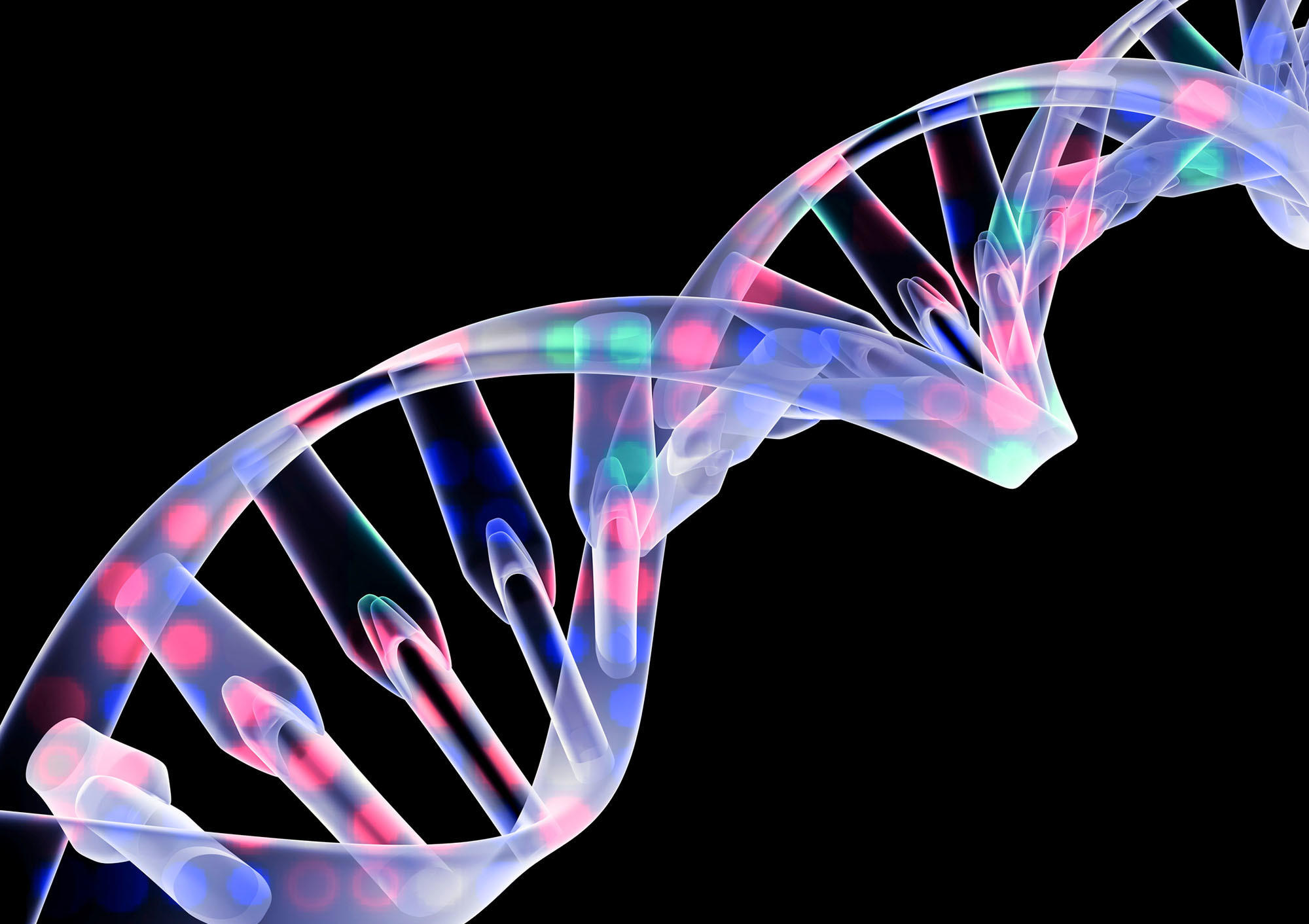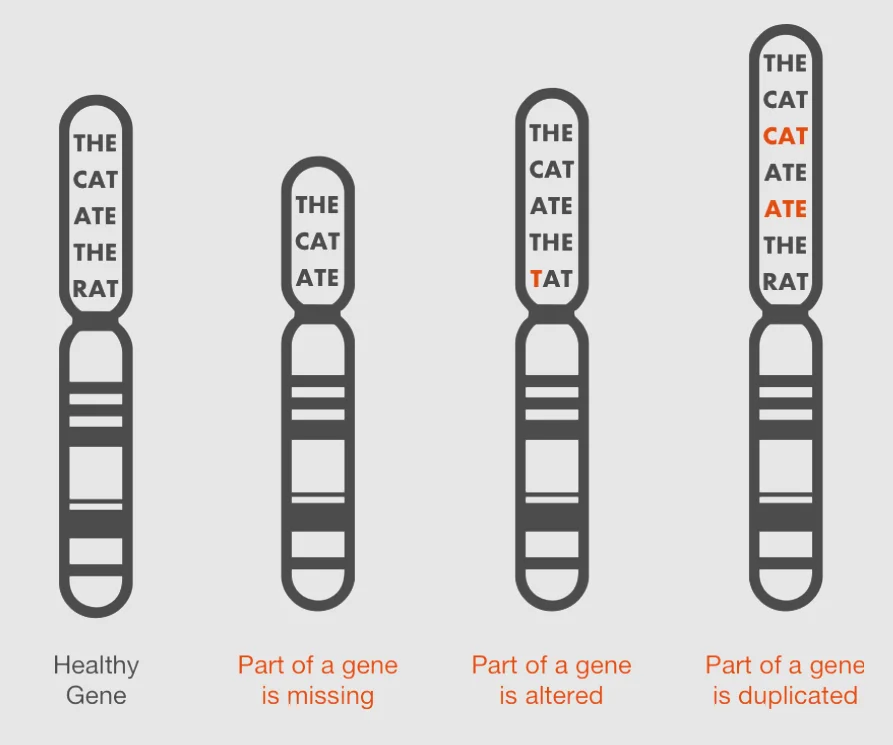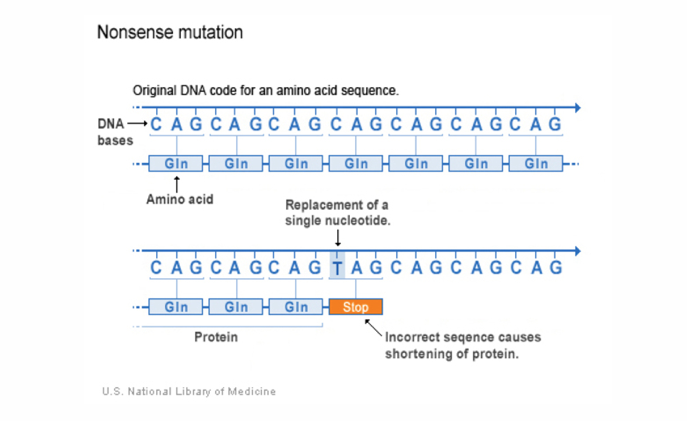
What is FOXG1 Syndrome?
What is FOXG1 Syndrome?
FOXG1 syndrome is a rare, pediatric, neurological disorder that impacts brain development and causes severe physical and cognitive disabilities.
FOXG1 syndrome is caused by several types of mutations in the FOXG1 gene. Previously called Brain factor 1, FOXG1 is a transcription factor gene that creates the protein necessary to “turn on or off” many other genes. Scientists have found significant links between FOXG1 and major brain disorders including autism, epilepsy, Alzheimer’s, schizophrenia, and brain cancers.
FOXG1 syndrome is typically a "de novo" (spontaneous, non-inherited) mutation that occurs in one of the two copies of the FOXG1 gene. This means that patients express one healthy copy and one mutated copy or variant. There are multiple variants of the gene reported in patients that affect individuals differently along the spectrum of severity.
The mutations (or variants) that occur in the FOXG1 gene and cause FOXG1 Syndrome include frameshift, missense, nonsense, duplication, and deletions. Usually, the earlier a mutation occurs along the sequence of the FOXG1 gene, the more severe is the manifestation of the disorder. Missense mutations have only been detected in the forkhead DNA binding sequence and typically result in milder characteristics of FOXG1 syndrome.
Source: FOXG1 Syndrome Patient Registry
There are currently about 900 identified individuals with FOXG1 syndrome worldwide, with the diagnosis rate climbing steadily year-over-year. A recent study estimates the occurrence rate to be 1 in 30,000 live births .
Most children born with FOXG1 syndrome are nonverbal, have severe cognitive and physical disabilities including intractable seizures, respiratory distress, cortical vision impairment, feeding difficulties, reflux, movement disorders, and sleep and GI issues. Less-severely-affected FOXG1 patients present with Autism Spectrum Disorder.
There are currently no FDA approved treatments or clinical trials for FOXIG1 syndrome and we're on a mission to change that.
Video: What is FOXG1 syndrome?
FOXG1 BIOLOGY
FOXG1 syndrome is a monogenic neurological disorder caused by mutations in the FOXG1 gene.
The FOXG1 gene encodes an evolutionarily conserved Forkhead box protein.
The FOXG1 gene is a transcription factor that regulates the turning on or off of other genes
The following pathogenic variants have been observed in FOXG1 syndrome patients: deletions, duplications, missense, nonsense, truncation and frameshift variants. See explanations about the various mutation types below.
What Does the FOXG1 Protein Do?
The FOXG1 Protein tells our brain what to do.
When a child’s FOXG1 gene is missing, spelled wrong (altered), or duplicated it impacts brain development.
Is There a Cure for FOXG1 Syndrome?
Currently, there is no cure for FOXG1 syndrome. There are no approved therapeutics for FOXG1 syndrome. There is a high unmet need, which is common in the rare disease neurological space.
The FOXG1 Research Foundation is working towards a precision medicine platform to focus on the symptoms that are specific to FOXG1 patients. The deep data from the digital FOXG1 Citizen Natural History Study informs researchers about the symptoms and experiences of FOXG1 patients, providing true clinical end points for trials.
In 2022, The FOXG1 Research Foundation will be announcing the first-ever clinical trial for patients with FOXG1 syndrome for a promising epilepsy medicine. To learn more: contact@foxg1research.org
Why FOXG1 is an ideal gene for research:
FOXG1 syndrome is caused by just one singular gene - FOXG1.
FOXG1 is a small gene made up of a single exon. Therefore, it can be easily packaged into most viral vectors used in gene therapy.
Except for some expression in the foregut, FOXG1 expression is restricted to specific regions in the brain; therefore wide-spread systemic targeting is not needed, making gene therapy more viable.
FOXG1 dysfunction has been linked to various other conditions like autism, Alzheimer’s, and schizophrenia, suggesting that therapy development may be transferable to more common disorders.
These reasons make FOXG1 an easier target for biotechnology companies to test therapies and experiment on and a fix to FOXG1 could have broad impact on a plethora of other conditions.
FOXG1 is Linked to Major Brain Disorders Like Autism and Schizophrenia
Research shows FOXG1 plays a role in autism, Alzheimer's, schizophrenia, and epilepsy.
This article in Cell, led by scientist Dr. Flora Vaccarino at Yale University suggests that FOXG1 may play a critical role in the development of autism.
Unlocking the mysteries of common neurodevelopmental disorders via FOXG1
AUTISM SPECTRUM DISORDERS: PROPORTION MONOGENIC – 15-34%
FOXG1 Could be a viable drug target for ASD
Elevated FOXG1 levels found in a subset of severe ASD aptients
FOXG1 variant identified in an individual with ASD and his similarly affected mother
FOXG1 gene dose associated with ASD diagnosis
1 in 68 children have an ASD diagnosis in the United States
15-34% of ASDs thought to be caused by a single genetic disorder
iPSC neurons cultured from patients with ASD have increased FOXG1 levels
Patients with greater head size, and more severe ASD symptoms, appear to have higher level of FOXG1 expression in iPSC-derived organoids
FOXG1 Research Foundation has an Autism FOXG1 mouse model
SCHIZOPHRENIA: PROPORTION MONOGENIC HERITABILITY 70-80%
Schizophrenia affects ∼ 24 million people or 1 in 300 people (0.32%) worldwide.
A schizophrenia-associated loci was shown to physically interact with and regulate FOXG1 expression
Expression of schizophrenia-associated gene, GRID1, found to be significantly elevated in FOXG1 patient-derived iPSC neurons and Foxg1+/- fetal mouse brainFunctional/regulatory elements in FOXG1
EPILEPSY: PROPORTION MONOGENIC – >40% in EPILEPTIC ENCEPHALOPATHIES
∼ 65 million have epilepsy globally.
∼ 1 in 26 people will develop epilepsy at some point during their lifetime.
∼3.4 million people in the United States have epilepsy; 1.2% of the population
∼ 87% of individuals with a FOXG1 mutation are diagnosed with epilepsy
Age of onset, seizure type, response to medication variable
Epilepsy is associated with increased risk for intellectual disability, anxiety and depression, autism (ASD), and sudden death .
ALZHEIMER’S:
Worldwide ∼44 million people have Alzheimer’s or a related dementia
FOXG1 is one of the five genes that play a key role in development of the human neocortex and hippocampus projection neurons that are severely degenerated in Alzheimer’s brains
FOXG1 Characteristics:
Microcephaly and Structural Brain Abnormalities
Small head size with partial or full loss of the corpus callosum (inhibiting communication of left and right brain)
Epilepsy/Seizures
Infantile spasms and life-threatening seizures resistant to drug and surgical treatments
Physical Disability
Low muscle tone leads to inability to sit, walk, talk or use hands purposefully
Hyperkinetic Movement Disorders causing involuntary movements
Strabismus, poor eye contact, and cortical visual impairment
Feeding Issues
Low muscle tone leads to reflux, constipation
Most patients require feeding tube placement
Associated Conditions and Disorders
Autism Spectrum Disorders (ASD)
Sensory Processing Disorder (SPD)
Movement disorders
What is FOXG1 syndrome? Heather Olson, MD, MS, Neurologist at Boston Children’s and Neurology Instructor at Harvard Medical explains.
FOXG1 Mutations (Genotypes) Explained
Various mutations within the FOXG1 gene have been identified in people with FOXG1 syndrome. The condition can also result from a deletion of genetic material from a region of the long (q) arm of chromosome 14 that includes the FOXG1 gene and several neighboring genes. All of these genetic changes prevent the production of forkhead box G1 or impair the protein's function. A shortage of this protein disrupts normal brain development starting before birth, which appears to underlie the brain malformations and severe developmental problems characteristic of FOXG1 syndrome
The type of gene mutations have varying effects on brain development and health, depending on where they occur and whether they alter the function of essential proteins. The types of known-FOXG1 mutations include:
The various FOXG1 mutations reported in the FOXG1 Patient Registry are described in detail in this webinar.
Types of FOXG1 Mutations:
FOXG1 Missense Mutation
This type of mutation is a change in one DNA base pair that results in the substitution of one amino acid for another in the protein made by a gene.
FOXG1 Nonsense mutation
A nonsense mutation is also a change in one DNA base pair. Instead of substituting one amino acid for another, however, the altered DNA sequence prematurely signals the cell to stop building a protein. This type of mutation results in a shortened protein that may function improperly or not at all. A nonsense mutation causes a Premature Termination Codon (PTC) also known as a Stop Codon. About 30% of patients with FOXG1 syndrome are reported to have a Nonsense mutation.
FOXG1 Deletion
A deletion changes the number of DNA bases by removing a piece of DNA. Small deletions may remove one or a few base pairs within a gene, while larger deletions can remove an entire gene or several neighboring genes. The deleted DNA may alter the function of the resulting protein(s). Deletions including cis-acting regulatory elements, but not coding region result in a FOXG1 syndrome phenotype.
FOXG1 Duplication
A duplication consists of a piece of DNA that is abnormally copied one or more times. This type of mutation may alter the function of the resulting protein.
FOXG1 Frameshift mutation
This type of mutation occurs when the addition or loss of DNA bases changes a gene's reading frame. A reading frame consists of groups of 3 bases that each code for one amino acid. A frameshift mutation shifts the grouping of these bases and changes the code for amino acids. The resulting protein is usually nonfunctional. Insertions, deletions, and duplications can all be frameshift mutations.
Meet the beautiful children with FOXG1 Syndrome
Spelling Key: FOXG1 - the protein in humans and mouse models | FOXG1 and Foxg1 in italics- refer to the gene in humans and animal models , respectively. source: NIH National Library of Medicine











